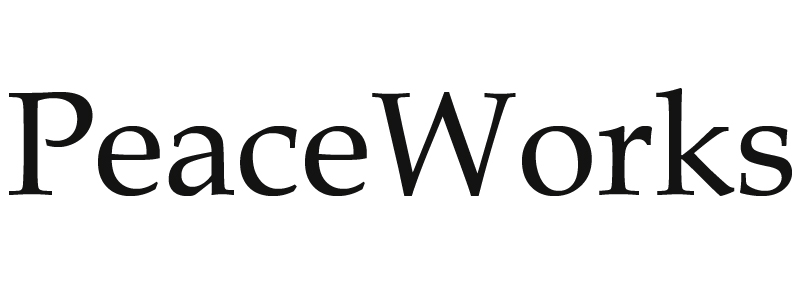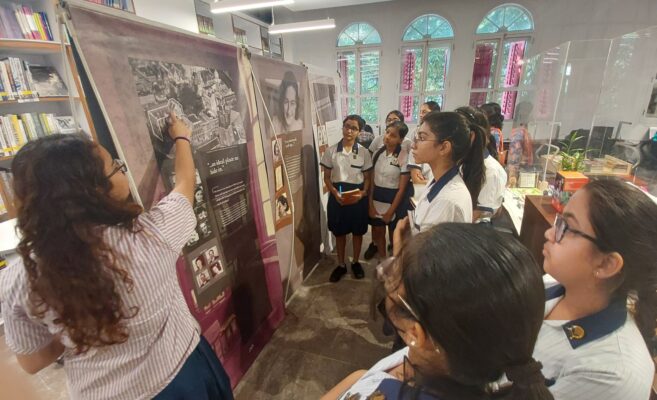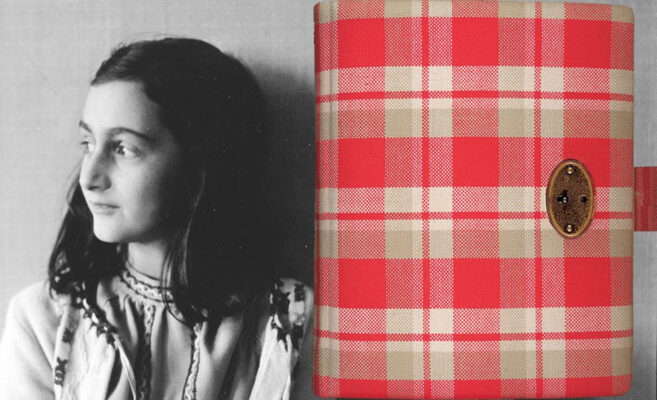As part of a recently concluded event series by Goethe-Institut / Max Mueller Bhavan Kolkata in collaboration with Jadavpur University, Lessons from Germany’s Past: Fascism as a Historical Experience, PeaceWorks was invited to hold the Anne Frank: A History for Today exhibition.
The exhibition, as per the project’s format, was preceded by a 2-day workshop (28–29 October 2022) wherein high school students from schools across the city were invited to collectively install the travelling exhibition and train to become peer guides.
The workshop began with an icebreaker where the 18 participants introduced themselves with the names of their current favourite authors. This was followed by a discussion around the students’ associations with The Diary of a Young Girl to set the context of the exhibition.
A range of responses came forth: some students said that they had been introduced to the text at a very early age—including one who read it first at the age of seven—to others who read it at a later stage through high school. They discussed how their reading experience of the book had changed with time and how they received the book differently upon revisiting it for the workshop—in terms of the things they associated with, their response to her experience, the historical context in which her story unfolds. One common observation among most of their responses was that while their emotional response to her personal experience was extremely strong and moving for them all along, it was their understanding of the historical context that was largely missing at their earlier age. This is where we located this exhibition while also discussing the larger framework within which the Anne Frank House had put this together. On this note, we demonstrated how the panels were to be installed and the next couple of hours were spent with the students working in groups to set up the exhibition. The installation done, everyone worked together to figure out how best to lay out the exhibition given the space. Soon, the exhibition was set up in its entirety.
Following lunch, everyone gathered back and was given 45 minutes to view the exhibition individually with instructions to make notes of the thoughts and questions that occurred to them while viewing it. We then walked through the exhibition with the students, exchanging what we observed in each of the sections. This began with discussing the significance of the historical context in which Hitler’s NSDAP came to power—the end of the First World War, the consequent Treaty of Versailles and its impact on Germany leading to the extreme economic crisis that Germany saw. We then went on to discuss the Night of the Broken Glass or Kristallnacht to understand how it was reported by the German media and the propaganda machinery, juxtaposing it with what had happened in reality leading up to Kristallnacht. This led them towards drawing linkages with the contemporary world and how events are reported in the media, with particular reference to media coverage of protests around the world. We continued our way through the exhibition, either highlighting images on the panels that we wanted to draw the students’ attention to, or discussing those they picked out for us. One of the questions we discussed, for instance, was: why do you think any government/organization would decide to burn books, which led into a conversation around why certain kinds of literature, art, music and cinema were banned during this period, with particular emphasis on the Degenerate Art exhibition. How racial studies was taught in schools was another point of discussion—here students brought in the role of Hitler youth camps during this period, with some reference to the film, Jojo Rabbit. From these conversations we went into the specificities of the life and experiences of Anne Frank, discussing how laws against the Jews became increasingly aggressive culminating in labour camps and ‘the Final Solution’. Therefore, thinking about the intricacies of how authoritarian regimes function, where the change is not necessarily overnight but is wrought over time through strategic conditioning of the governed so as to minimize the possibility of resistance.
On the second day, we invited the peer guides to share their thoughts from the previous day’s session. Thereafter, we continued our walk from where we had ended the previous day. In the final section of the exhibition that focused on the lives in the secret annex, our discussion was around how people rebuild their everyday even in the most hostile circumstances. This segment concluded on a heavy note, our thoughts with Otto Frank and how it might have been for a father to be waiting for his daughters only to discover they had died, and thereafter being handed Anne’s diary that he proceeded to publish. The walkthrough concluded with a film screening of The Short Life of Anne Frank, a documentary that in some ways summed up our walk through while still adding much more.
After a short break, the students were assigned into groups: each group was asked to pick one set of panels to demo with, taking their peers and us for a guided walkthrough. After a 30-minute period for the students to draw up a sense of how they would like to prepare for the demo, each group took the rest through their respective sections. Several new points of intervention emerged over this process because while they did draw from the initial walkthrough that we had done with them along with the film viewing, this demo allowed them to engage more closely with the panels and build their narratives around what drew them most to take the conversation further.
Given that the scope of the historical context within which Anne’s life is embedded is immense, there were instances where we intervened to clarify some of the nuances, for instance with the Nuremberg Race Laws or the complexities in understanding what transpired during Kristallnacht, resulting in further open discussions.
The exhibition saw over 300 school visitors (teachers and high school students). Over the first few visits, the peer guides developed a more sound sense of what worked and what needed to be done differently, based on their experience guiding diverse visitors.
Testimonials:
‘I am Kastoorika Basu and I was a participant of the Anne Frank: A History For Today peer-guiding workshop. I had a really good time being a part of this workshop which was a learning experience for me but in a convivial way. This workshop was not only for the students to learn about peer-guiding but rather having deep insightful discussions about each and every aspect of the topic and figuring out a way ourselves to present the information in an enthralling manner. This process of receiving all the gripping information about Anne Frank and the German society at that time was interesting to the viewers of the exhibition as well as to all the peer guides because all this was done through fun activities where we learnt something new each day. Hoping to work with Peaceworks in the future and having such an interesting yet informative time!’
—Kastoorika Basu, Student of Modern High School for Girls
‘The Anne Frank Exhibit was an amazing experience as it taught us about the girl who had fought to survive in a world where her kind was prosecuted, based on nothing but the word of a fanatic. It encouraged us to think and analyze the contemporary socio-political situation while interacting with other students. All in all, I will surely remember it as a formative experience of my teenage years.’
—Oishi Sanyal
‘Being one of the 15 students chosen to be peer guides for the Anne Frank- A History for Today project at Goethe Institut was one of the most memorable and fulfilling experiences I’ve had till date. Not only were we enriched with and overwhelmed by all the new tidbits of knowledge that we gained, we also had a wonderful time engaging with students whom we guided through the exhibition, which enhanced our kinaesthetic learning experience! Their enthusiastic questions boosted our morale and reinstated our energy as we prepared to demonstrate for our next batch of visitors. All of us had a really fantastic and fun time there, and we thoroughly enjoyed ourselves.’
—Aishichchha Dutta, XI-A, Modern High School for Girls
Pages:






